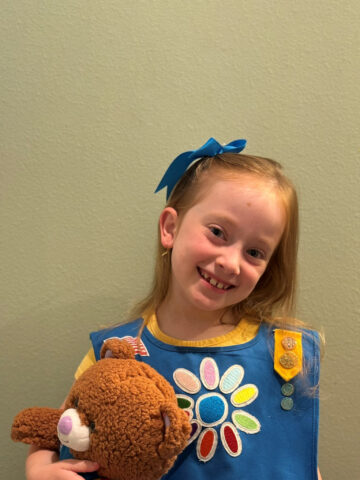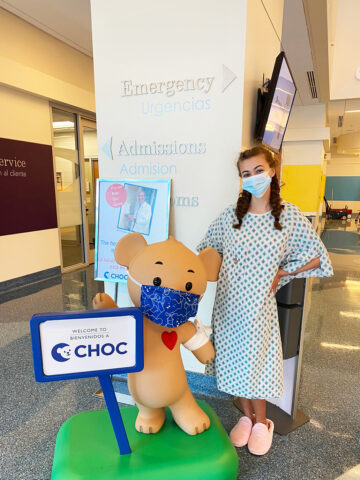Supported by a promising new study, a multidisciplinary CHOC team has developed a groundbreaking pain management treatment method to work alongside the Nuss Procedure, an unfortunately painful surgery to correct “sunken chest” or pectus excavatum (PE).
PE affects about 1 in 400 people, but mostly males. It’s caused when the breastbone and some ribs grow abnormally, creating a sunken chest, or depression in the chest. It will usually first appear during adolescence.
The Nuss procedure is the standard treatment for PE but can cause severe and lasting pain following the procedure for patients. The new pain management technique involves using medication injected into the space next to the spinal nerve roots together with cryoablation – freezing the nerves with extremely cold nitrous oxide.
Using advanced pain blocks (numbing medications) and cryoablation together, as described in the study by lead author and CHOC pediatric surgeon Dr. Mustafa Kabeer, dramatically improves recovery and decreases the need for narcotics for pain after surgery. In fact, most patients only feel minimal pain and 65% of them are discharged a few hours after their surgery.
CHOC is a leading provider for pectus care. Our pectus treatment program has a team of expert pediatric surgeons, nurse practioners and a dedicated pectus coordinator, Jacqueline Hurley, who are there to provide kids with the best possible outcomes so they can get back to doing what they love as soon as possible.
Nuss procedure for pectus excavatum helps standout volleyball player get back on the court
Brock Murphy, 18, a standout volleyball player and a freshman at Long Island University in Brooklyn, N.Y., underwent the Nuss procedure at CHOC on March 11, 2022, when he was a junior in high school.
Brock, who has PE, elected to have the surgery after he noticed a decrease in stamina when he played volleyball and was concerned about his long-term health.
Brock says he could have gone home the day of surgery but went home the next day, out of caution.

“When I woke up, I was shocked,” says. “Pain wise, it felt like somebody had rubbed a ton of vapor rub over my chest. I couldn’t really feel pain — just a lot of pressure.”
Brock opted for pain medication to help him feel more comfortable, and recovered in bed for three days. But after two weeks, he felt ready to play volleyball. He started playing three months after surgery.
CHOC’s care made all the difference
“I was very happy with the care I received at CHOC,” says Brock, who today feels only a bit of numbness in parts of his chest as his nerves continue to regenerate after being frozen. “They didn’t push surgery onto me. They let me make all the choices.”
Brock says Dr. Kabeer and Jacqueline have been “amazing” in staying connected with him.
“They care about the longevity of their patients even after they leave the hospital,” Brock says. “They really care about you as a person and not just the medical side of things.”
Brock plans to resume playing Division 1 volleyball in the spring. He’s recovering from ACL surgery on his left knee after suffering an injury while playing volleyball in October.
Brock, an outside hitter who made the national team when he was 14 years old, is planning to go into nursing.
“I feel completely normal now and I have way more stamina,” he says.
Get more expert health advice delivered to your inbox monthly by subscribing to the KidsHealth newsletter here.
Learn more about CHOC’s Pectus Treatment Program
CHOC’s pectus excavatum program brings together a multidisciplinary team of pediatric experts to provide your child with expert care to get them back to doing what they love to do as soon as possible.





